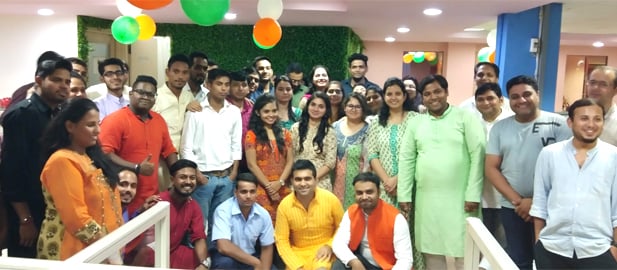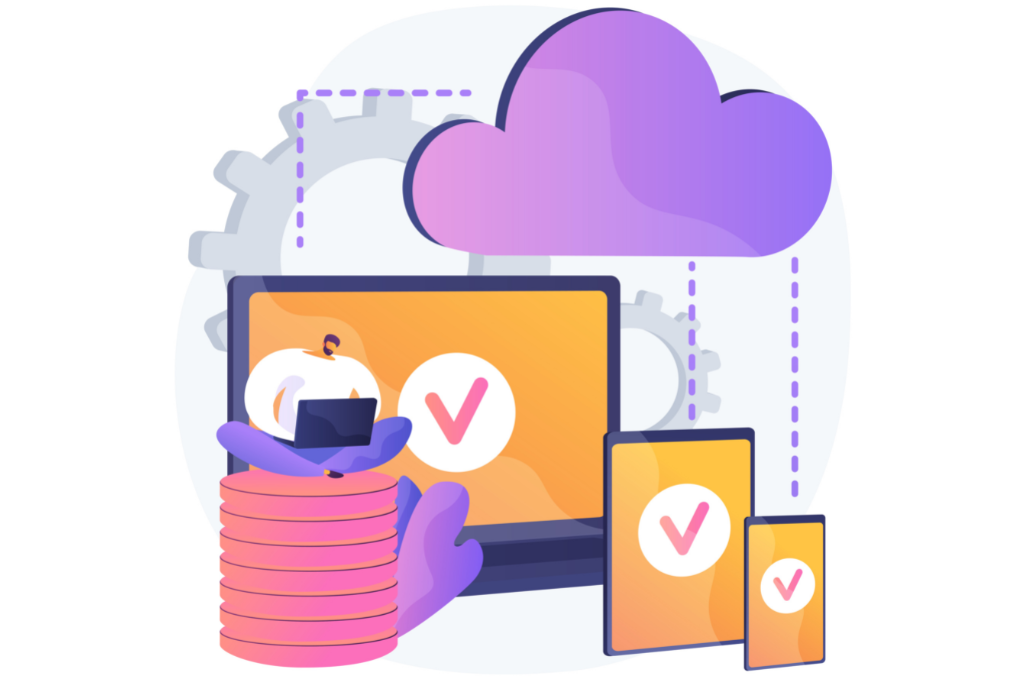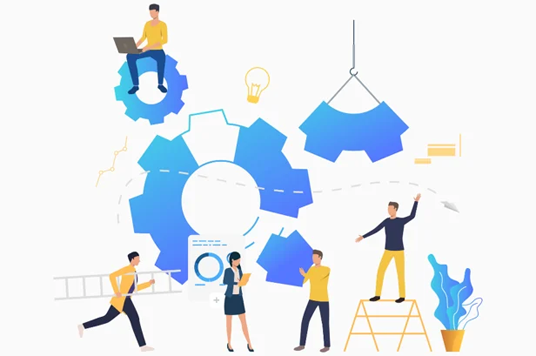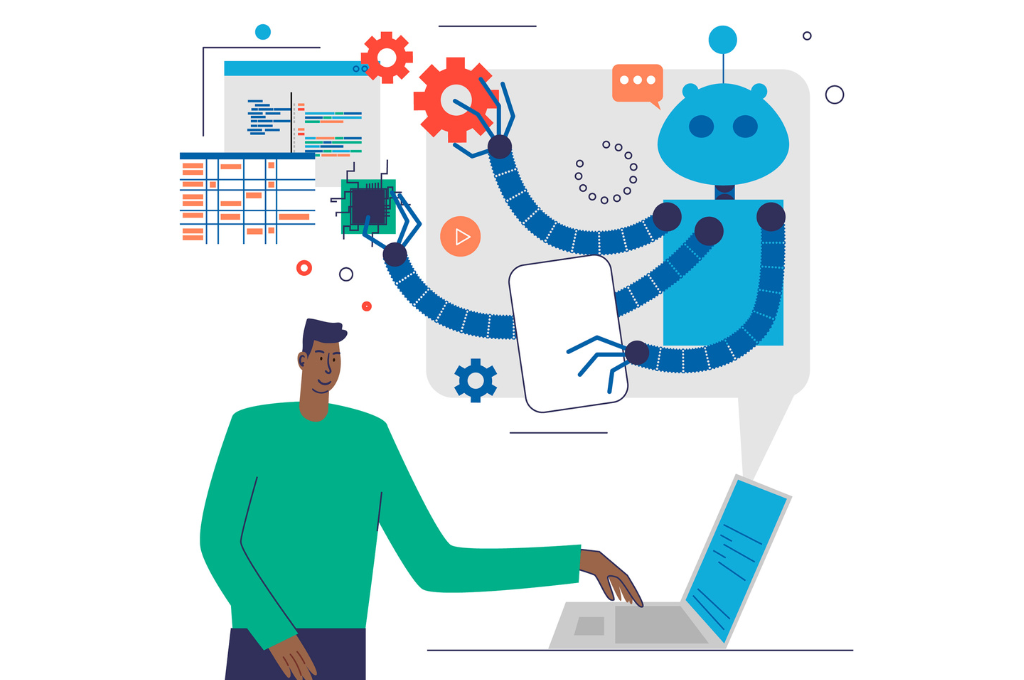The SaaS ecosystem in 2025 is undergoing a strategic evolution. While horizontal SaaS platforms continue to scale, the real momentum lies with niche players targeting highly specialized industries. Startups and enterprises alike are focusing on problems that are specific, urgent, and under-addressed. Whether it’s compliance in telehealth, ESG reporting in corporate sustainability, or burnout management in remote teams, the next wave of SaaS growth is being fueled by vertical expertise, embedded intelligence, and hyper-personalization.
What makes this time unique is not just demand, but also capability. AI can be embedded at every workflow node, while low-code platforms allow faster MVP development than ever before. API-first architecture makes integrations seamless, and edge computing solves latency for real-time apps. In this blog, we dive into 2025-ready SaaS product ideas that solve real-world problems, integrate with the latest tech, and offer scalable revenue models.
Vertical SaaS Concepts for High-Growth Industries
Vertical SaaS—software built for specific industries—is dominating the startup landscape. These platforms not only solve industry-specific challenges but also bring built-in compliance and domain knowledge.
Telehealth Compliance & Audit Assistant
- Navigating a Maze of Healthcare Policies: The global telehealth market is expected to hit $285 billion by 2027. Yet with this expansion comes scrutiny. Providers must comply with multiple data regulations—HIPAA in the U.S., GDPR in Europe, and new telemedicine laws in India and Southeast Asia. This SaaS idea addresses compliance complexity by offering policy tracking, audit logs, and real-time alerts for practitioners.
- AI That Understands Healthcare Law: A built-in AI engine can automatically interpret new rules and cross-reference them against a provider’s operations. Smart notifications alert clinicians to update consent forms, adjust workflows, or avoid risk-prone actions.
- Business & Tech Model: Use a per-user subscription model, with premium features like compliance scoring or legal documentation downloads. A serverless, event-driven backend ensures cost-effective scale with secure health data storage.
Climate-Impact Dashboard for Corporates
- ESG Isn’t Optional Anymore: Over 90% of Fortune 500 companies report ESG data. Small and mid-size firms are being pulled into the fold by investors, governments, and even customers. A SaaS dashboard that visualizes real-time climate impact and forecasts reduction scenarios will be critical to corporate planning.
- Smart Forecasting & Benchmarking: AI models ingest energy bills, IoT sensor data, and procurement logs to map carbon emissions. The platform benchmarks a company’s carbon footprint against industry peers and simulates potential savings through policy tweaks or equipment upgrades.
- Revenue Model & Stack: Tiered pricing by facility count or employee headcount. Upsell analytics features or consulting packages. Hybrid edge/cloud systems process real-time sensor inputs, while the frontend delivers executive-level summaries.
SaaS Innovations for the Future of Work
Work has become asynchronous, distributed, and deeply reliant on digital tools. As organizations adapt, new SaaS opportunities arise to reduce friction, boost morale, and improve efficiency.
AI-Powered Remote Collaboration Assistant
- Meeting Smarter, Not More: An average professional spends over 21 hours a week in meetings. Many of these lack agendas or follow-through. This SaaS solution acts as a virtual assistant—joining calls, transcribing conversations, assigning tasks, and following up autonomously.
- Embedded Intelligence in Daily Tools: The assistant integrates with Google Meet, Zoom, Slack, and Trello to deliver AI-powered summaries, detect task ownership, and recommend sprint actions. It adapts to the team’s communication rhythm and provides weekly productivity insights.
- Freemium + Growth Pricing: Offer free access for individuals or small teams. Charge for premium AI features, integrations, or sentiment analytics. Use serverless Lambda functions for scalable transcription and event handling.
Mental Health Microservices for Teams
- Employee Well-being is a KPI: 77% of workers say they’ve experienced burnout. Organizations need lightweight, accessible solutions to monitor and improve mental health. This SaaS product provides micro-interventions—short meditations, gratitude journaling, and energy tracking—that require no time off or HR scheduling.
- AI That Respects Privacy: Natural language processing identifies emotion trends without storing personal messages. AI nudges based on daily usage patterns help teams build habits for wellness, not just compliance.
- Commercial Model: B2B SaaS model based on active users with volume discounts for large teams. Include enterprise APIs for integration into existing HR platforms like Workday or BambooHR.
- Privacy First: Anonymized data aggregation with opt-in permissions. Role-based access control ensures no manager sees individual records unless explicitly granted.
Asynchronous Project Management Assistant
- The Distributed Sprint Problem: Remote teams struggle with project velocity across time zones. Status updates are fragmented and often redundant. This SaaS tool uses AI to collect updates from project boards and communication tools to create automatic, role-based daily digests.
- Intelligent Auto-Pilot: It flags overdue items, identifies sprint blockers, and highlights dependencies. Product managers receive weekly impact reports, while developers get prioritized task lists.
- Pricing & Deployment: Subscription per team seat. Custom enterprise pricing for large orgs. Event-driven backends trigger updates, while frontend bots deliver digests via chat or email.
AI-Powered Insights & Cybersecurity SaaS Solutions
Data-driven decisions and proactive security are now must-haves, not luxuries. SaaS tools in this category must offer deep insights with strong protection layers.
AI-Driven Customer Feedback Analyzer
- Listening at Scale: Companies receive thousands of inputs—survey responses, user reviews, support tickets. Manually analyzing this volume is impossible. This SaaS tool uses AI to automatically classify, prioritize, and analyze feedback from multiple channels.
- Multichannel, Multilingual, Multimodal: The system supports text, voice, and video feedback, parsing sentiment and urgency across languages. It can segment insights by product line, geography, or customer cohort.
- Pricing & Tech: Per-seat or per-insight pricing. APIs for CRMs like Salesforce or HubSpot. Use transformer-based NLP models fine-tuned on customer service data for accurate tagging and intent detection.
Modular Cybersecurity for SMBs
- Simplifying the Security Stack: Most SMBs are not equipped to manage complex cybersecurity tools. A modular SaaS platform allows them to cherry-pick solutions—ransomware defense, VPN, compliance scan—on a need basis.
- Zero Trust by Design: Each module enforces role-based access, device-level authentication, and automated threat detection. Real-time dashboards give business owners visibility without the jargon.
- Monetization Levers: Core platform is free. Pay for each module or purchase bundles. Reseller programs for MSPs or IT consultants.
- Edge Deployment: Security-sensitive tools can be deployed locally with cloud backup. Threat intel is anonymized and fed into an AI engine to detect community-wide trends.
SaaS Marketplaces & Tools for SMB Independence
Service providers and solopreneurs want more control and fewer middlemen. SaaS platforms that enable this autonomy are on the rise.
No-Middleman Services Marketplace
- Taking Back Control: Platforms like Fiverr and Upwork charge 10–20% commissions and control the customer relationship. A no-middleman platform allows providers to brand their services, set rules, and retain data.
- Full Commerce Suite: Includes booking, invoicing, legal templates, embedded payment gateways, chat, and review systems. Service providers can run their business without switching tabs.
- Revenue Channels: SaaS licensing fee or per-transaction cut. White-label options for agencies or franchise networks.
- Platform Design: Use low-code tools for frontend UX customization. APIs connect to payment processors, accounting software, and CRMs.
Key Trends Driving SaaS Opportunities
- AI Everywhere: Whether it's summarizing feedback or enhancing cybersecurity, embedded AI gives your product a competitive edge and justifies premium pricing.
- No-Code for Customization: Empowering users to build their own workflows or dashboards reduces churn and increases product stickiness.
- API-First Expansion: Ecosystem products that integrate easily become indispensable. Public API documentation should be part of your launch plan.
- Edge for Real-Time Use Cases: Applications needing low latency—telehealth, finance, or logistics—must blend edge processing with cloud computation.
- Data Ethics & Privacy Engineering: Build with trust as a feature. GDPR, HIPAA, CCPA, and similar laws are only getting stricter.
SaaS Idea Validation Checklist for 2025
- Who Cares and Why Now: Is your product solving a burning problem that users feel daily?
- Interviews Over Intuition: Talk to 10–30 prospective users. If they wouldn’t pay for a prototype, it’s not urgent enough.
- Competitive Edge: What’s your wedge? A faster feature? Better UX? Niche use case?
- Lean MVP Strategy: Can you test the core hypothesis with one feature or a landing page?
- Ethical Risks: What could go wrong—data misuse, bias, trust erosion? Have you baked in countermeasures?
Rapid Prototyping Tools to Launch Faster
- Low-Code Builders:
- Bubble for marketplaces and CRMs
- Retool for admin panels and ops tools
- Appsmith for internal dashboards
- Backend Acceleration:
- Firebase for real-time apps
- Supabase for relational data + auth
- AWS Lambda for event-driven compute
- AI Integrations:
- OpenAI for GPT workflows
- Hugging Face for domain-specific models
- Azure Cognitive for vision, text, and audio
- Analytics from Day 1:
- PostHog for product analytics
- Mixpanel for growth funnels
- Metabase for executive dashboards
Early SaaS Metrics That Matter
- Time to Value (TTV): Can users reach a “wow” moment within 10 minutes?
- Activation Rate: % of signups who hit the core feature within the first session
- Day 7/30 Retention: Are you solving a sticky enough problem to retain usage?
- Monthly Recurring Revenue (MRR): Are you growing consistently month-over-month?
- Net Promoter Score (NPS): If they love it, they’ll refer it.
Take the Next Step with AI Confidence
2025 is a golden window for building vertical, intelligent, and impactful SaaS products. As industries become more data-driven and distributed, there is massive room for innovation in compliance, sustainability, productivity, wellness, and insights. But great ideas are just the beginning. Success lies in moving from idea to prototype fast, validating continuously, and embedding trust in your tech stack from day one.
At Classic Informatics, we’ve helped dozens of teams launch SaaS platforms that solve real problems—powered by AI, low-code innovation, and compliant architecture. Whether you're validating an idea or building for scale, our full-stack teams and product thinkers are here to accelerate your journey.
Explore Classic Informatics’ SaaS & AI Services
- SaaS MVP Design & Development
- AI/ML Integration with GPT and custom models
- Product Engineering from concept to scale
- Compliance-First Architecture (HIPAA, GDPR, SOC2)
- API Strategy & Integration for ecosystem growth
Ready to build a SaaS product for 2025?
Let’s talk. We’ll help you go from vision to version 1.0—faster, smarter, and stronger.






















